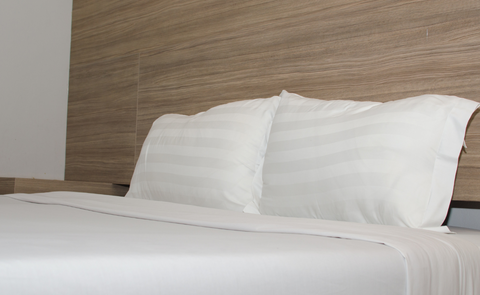Are you tired of tossing, turning, and waking up with neck tension? A cervicale roll might be just what you need to finally experience the comfort you’ve been craving. With the focus keyword “cervicale roll,” this guide shows you how to make your very own supportive pillow, step by step. Instead of spending money on pre-made pillows, you can craft a personalized option right at home, ensuring it meets your unique needs and preferences.
WHY A CERVICALE ROLL MATTERS
A cervicale roll is specially designed to support your neck’s natural curve. When you sleep without proper support, your neck can remain in an awkward position, leading to stiffness, muscle strain, or even chronic pain. By using a cervicale roll, you’re proactively creating alignment between your neck, shoulders, and spine, which can reduce tension and help improve the quality of your rest.
But why opt for a DIY approach? Making your own cervicale roll lets you control everything—from the firmness and size to the type of material you use. This customized approach can help you avoid the frustration of one-size-fits-all pillows that don’t truly fit your neck’s needs. You’ll be able to tailor the dimensions to your comfort level, ensuring you wake up feeling refreshed rather than sore.
BENEFITS OF CRAFTING YOUR OWN CERVICALE ROLL
-
Customization: When you create your own cervicale roll, you choose the length, diameter, and filling. This way, you avoid pillows that feel too hard, too soft, or simply too big for your neck.
-
Cost-Effectiveness: Store-bought orthopedic pillows can be pricey. By making your own, you can reuse materials from around the house or invest in exactly what you want without overpaying.
-
Proactive Self-Care: Embracing DIY neck support is a way of taking charge of your health. You’ll gain a better understanding of how your sleeping posture can relieve or worsen discomfort.
-
Sustainability: If you’re conscious about the environment, you can choose eco-friendly fillings and fabrics. Repurpose old towels or pillowcases to minimize waste.
MATERIALS YOU’LL NEED
-
Fabric or Towel: Look for a breathable, soft material that won’t irritate your skin—an old pillowcase or cotton blend works well.
-
Filling: Options include memory foam scraps, polyester fiberfill, or rolled-up towels. Choose something that offers the firmness you prefer.
-
Measuring Tap: Measure both your neck and pillow dimensions to ensure a snug fit.
-
Scissors: These will be handy for cutting excess fabric or trimming foam.
-
Needle and Thread (or Sewing Machine): Essential if you plan on sewing the cylinder shape closed.
-
Pins and Clips (Optional): These help keep your fabric in place while sewing.
STEP-BY-STEP: HOW TO MAKE YOUR CERVICALE ROLL
-
Measure for the Perfect Size
-
Use a measuring tape to gauge the distance between your neck and the mattress when lying on your back.
-
Aim for a length that spans just under the width of your pillow. Most people prefer 18 to 24 inches in length and about 3 to 4 inches in diameter.
-
Cut Your Fabric
-
If you’re using new fabric, cut a rectangle about 2 inches longer than your target length. For the width, add a couple of extra inches for seams.
-
If you prefer no-sew, use a towel that’s close to the right size.
-
Make sure the fabric is soft enough by testing it against your cheek.
-
Sew or Secure the Material
-
No-Sew Option: Roll your towel or fabric into a cylinder and secure the ends with sturdy elastic bands or ribbons.
-
Sewing Option: Fold the fabric inside out, stitch along the length to form a tube, and leave the circular ends open. Flip it right side out when finished.
-
Insert Your Chosen Filling
-
Stuff memory foam, polyester fiberfill, or another chosen material inside. Distribute it evenly to avoid lumps.
-
Press down on the roll to test firmness. Adjust filling as needed.
-
Secure the Ends
-
Sewn Roll: Stitch the ends closed. You can add a drawstring or Velcro if you’d like to adjust firmness later.
-
No-Sew Roll: Keep the ends tightly secured with rubber bands, ribbons, or thick yarn.
-
Test Your New Cervicale Roll
-
Place the roll at the base of your neck while lying on your back. Check for a balance of support and comfort. If it’s not quite right, adjust the filling or diameter.
TIPS FOR PERFECTING YOUR DIY CERVICALE ROLL
-
Experiment with Materials: If foam feels too dense, try fiberfill. If fiberfill collapses too easily, a rolled towel might offer better support.
-
Use a Pillowcase: Wrapping the roll in a pillowcase keeps it clean and easier to wash.
-
Check Your Alignment: Have someone take a photo of your sleeping position. Your neck should be aligned with your spine.
-
Consider Side-Sleep Adjustments: If you’re a side sleeper, you might need a thicker roll to fill the gap between your neck and the mattress.
CERVICALE ROLL VS. OTHER ORTHOPEDIC PILLOWS
-
Targeted Support: Unlike large pillows claiming to support multiple areas, a cervicale roll focuses solely on neck alignment—ideal if neck tension is your main concern.
-
Adaptability: Many store-bought orthopedic pillows have fixed shapes. A DIY cervicale roll can be tailored in thickness and firmness, offering true customization.
-
Cost and Convenience: Specialty pillows often carry a high price tag. A homemade roll saves money and still offers targeted support.
CHOOSING THE RIGHT FILLING
-
Memory Foam
-
Pros: Conforms to your neck’s shape, distributing pressure evenly.
-
Cons: Retains heat, and may feel too firm for some.
-
Polyester Fiberfill
-
Pros: Lightweight, relatively cool, and easy to mold.
-
Cons: Might lose shape over time, needing occasional fluffing.
-
Rolled Towel
-
Pros: Easily available, adjustable by rolling tighter or looser.
-
Cons: Can feel firm if not adequately padded, may shift unless well-secured.
-
Microbeads
-
Pros: Highly moldable, adapts quickly to position changes.
-
Cons: Can be noisy if the beads move around, and may feel less cozy.
CARING FOR YOUR CERVICALE ROLL
-
Frequent Airing: Let your pillow or roll air out weekly to prevent odors and humidity.
-
Washing Guidelines: Fiberfill is typically machine-washable on a gentle cycle. Memory foam needs spot-cleaning.
-
Protective Cover: A removable cover makes it easier to wash and can extend the life of your roll.
COMMON MISTAKES TO AVOID
-
Overfilling: Too much filling can make your roll uncomfortably stiff and hinder natural neck curvature.
-
Ignoring Neck Pain: If discomfort persists, adjust firmness or consult a professional. Don’t just power through the pain.
-
Wrong Sizing: Too small a diameter won’t provide enough support; too large can strain your neck. Always measure and do a “test sleep.”
-
Using Poor-Quality Materials: Flimsy fabric may tear easily, and low-grade filling can clump over time.
SUPPORTING YOUR NECK BEYOND THE PILLOW
-
Regular Stretching: Light neck stretches before bed and upon waking can ease tension.
-
Mindful Posture: Pay attention to how you sit throughout the day—slouching adds strain on your neck.
-
Hydration: Staying hydrated supports healthier discs and muscles.
-
Activity Breaks: Take short breaks every hour if you work at a desk. Simple neck or shoulder rolls work wonders.
WRAPPING UP YOUR DIY CERVICALE PILLOW JOURNEY
By creating your own cervicale roll, you’re not just making a pillow—you’re investing in your overall well-being. This personalized approach ensures the pillow is tailored to your specific needs. Sleep becomes more restorative, and you’re less likely to wake up with the tension that once felt unavoidable.
If the initial firmness or size isn’t quite right, simple tweaks—adjusting the filling, changing the fabric, or even making multiple rolls—can make all the difference. Over time, you’ll gain a deeper understanding of your body’s needs, rewarding you with daily comfort and healthier alignment.
With your homemade cervicale roll in hand, you can look forward to waking up refreshed and ready to take on the day—minus the nagging neck pain. You deserve a restful night’s sleep, and now you have the perfect tool to achieve it.



